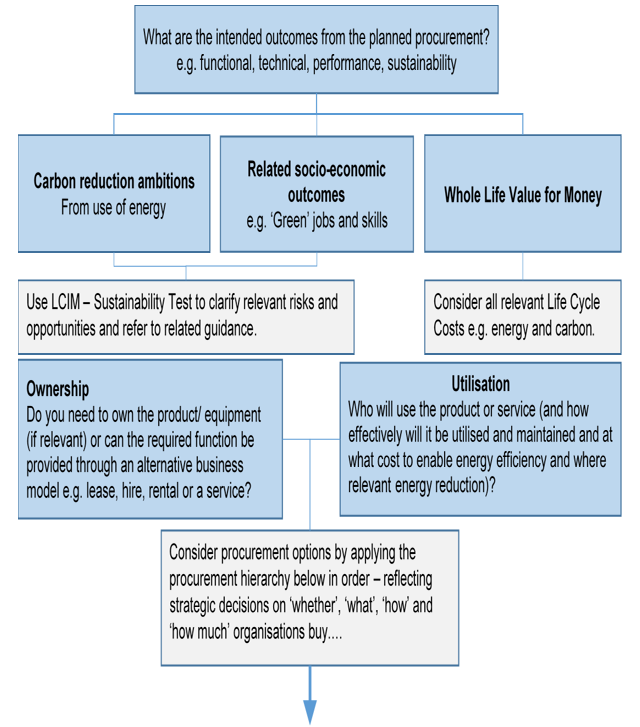As the Procurement Journey emphasises the most positive outcomes, including those relating to energy, will arise from early consideration, involving key stakeholders, of intended outcomes and the optimum solution(s).

Focus on energy and carbon emissions of infrastructure, equipment, product or services at the procurement stage.
This can help to reduce the life cycle costs of ownership for the end user as well as carbon - realised financial savings can help to justify the investment of resource or higher upfront costs, where relevant.
This may be applied through relevant standards and/or outcome-based requirements.
Mature dialogue - allow sufficient time for mature dialogue with the market early to set out your energy and carbon objectives and determine the nature of the potential market. This signals your intent to the market (as well as internal stakeholders), and to provide a basis for measuring and managing overall performance - including through the use of Prior Information Notices (PIN)/ Request for Information (RFI)/ Market events.
Innovation - this includes opportunities for innovative energy solutions, which may be essential to enable the transition to ‘Net Zero’. Cross functional working is essential to encourage and enable opportunities for innovation, involving all those who influence intended procurement budgets and outcomes. For example, are policy and mechanisms in place to consider alternatives to ‘the norm’; is the finance function in the public body supportive of innovative approaches? Do they allow / encourage ‘invest to save’ and similar?
Capability - how capable is the market in delivering these ambitions? The maturity of the market regarding energy efficiency and reduction can vary across categories e.g. the ICT and lighting sectors have improved the energy efficiency of products and data centres and relevant standards apply (see Specification), while energy management within services may vary.